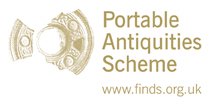Server check!
You are on the training database
Sickles
In 1939 it was estimated that there were over 100 Bronze Age sickles in collections in Britain. There are 11 on the Portable Antiquities Database and there are a variety of different types. There has not been a huge amount of work carried out on sickles which seems strange due to their numbers and different varieties. Many sickles in collections are unprovenanced. Sickles would not just be used for harvesting grain but are likely to have been used to cut other vegetation such as rushes and reeds and some may have had a ceremonial purpose.
Riveted Sickles
Examples = 1921,0215.1
http://www.britishmuseum.org/research/search_the_collection_database/search_object_details.aspx?objectid=809055&partid=1
OR 1894,1210.55
http://www.britishmuseum.org/research/search_the_collection_database/search_object_details.aspx?objectid=809054&partid=1
Date = 1100-800 BC
Distribution = Thames valley
Comment = Riveted sickles are tanged and can be ribbed or unribbed. At the base of the sickle there is a basal notch or rivet hole for attaching the sickle blade to the haft.
Knobbed Sickles
Example =
Date = 1400-750 BC
Distribution = Thames valley and Somerset mostly.
Comment = knobbed sickles (or button sickles) have three variants: round knob, an elongated knob and double knobs. In Britain most common types are the double and elongated knobs.
Socketed Sickles
Example = SF10118 HESH-199F11
Date = 1100-600BC
Distribution = Ireland, the Thames, East Anglia and the Highland zone
Comment = Socketed sickles developed into a variety of different types but they are all attached to the haft of the sickle by a socket. The socket can be either attached to the blade laterally (Fox’s Group I) or vertically (Fox’s Group II) and can be open at both ends or closed at one end. The blades are curved and over time the blade climbs higher on the socket until it is aligned with the top of the socket. Some sickles can have a loop on the socket and some have moulded decoration in the centre of the blade which can extend across the socket. Others also exhibit incised decoration. Some sickles blades extend beyond the socket in both directions creating the blade on one side and a heel on the other. A number of sickles have a hole in the heel of the blade or at the top of the socket which has been suggested was used for tying the sickle with a thong to the owner’s waist. Some sickles such as an example from Norwich are very thin and were perhaps used in ceremonies and not for harvesting crops.
References
- O’Connor, B. (1980) Cross Channel Relations in the Later Bronze Age. Oxford: British Archaeological Reports S91
- Fox, C. (1939). The Socketed Bronze Sickles of the British Isles; with special reference to an unpublished specimen from Norwich. Proceedings of the Prehistoric Society. 5, 222-248
- Fox, C. (1941). The non-socketed bronze sickles of Britain. Archaeologia cambrensis the journal of the Cambrian archaeological association. (need vol and page numbers)


